 Free Consultation
(610) 667-7511
Free Consultation
(610) 667-7511
 Free Consultation
(610) 667-7511
Free Consultation
(610) 667-7511
Car crashes are common. Here in the US, you are likely to experience a car accident about every 18 years. If you begin driving when you are 16, this means you will likely have at least one accident by the time you are 34. Throughout your life, you will probably have three to four auto accidents. Fortunately, most of those accidents will not be deadly for anyone involved. Only three out of one thousand incidents are likely to involve fatalities. Of course, those statistics won’t mean anything, if you or a loved one is unfortunate enough to be in one of those deadly crashes. You can improve your chances of surviving a fatal crash by taking a number of important steps.
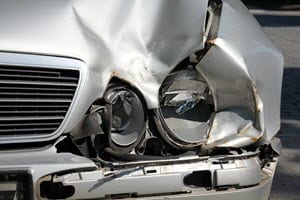
Crumple zones let the car take the damage, instead of its inhabitants.
We are limited in our car choices by budget. But that does not mean we can’t look carefully into how cars handle a crash. A while back, cars were built like tanks. It was not uncommon for the car to come out of an incident with no sign that it was in an accident. The problem with such cars is that the occupants were the ones who took all of the force when it was hit. While it might look cool to drive a 57 chevy, if you are in an accident, you are more likely to be seriously injured or killed than if you are driving a newer car. A study from 2014 showed that “nearly half of drivers ages 15 to 17 who died in car crashes from 2008 to 2012 had cars that were at least 11 years old, and nearly a third drove small cars.”
I remember, when I was too young to drive, that my father looked for a car for my sister that was “like a tank.” Like many parents, he was hoping to find the safest car for my sister. Fortunately, she was never in an accident in those old cars. But the reality is, that by looking for that old, tank like car, my father was actually making things riskier for my sister, not safer. Those old cars simply do not have the safety features of modern cars. Very old cars didn’t even have seatbelts. They also did not have crumple zones. Though crumple zones did exist as of the early 195os they did not become standard until many years later. Cars built in the late 90s and early 00s did not come standard with side airbags, electronic stability systems and other important safety features. Both side airbags and electronic stability were first introduced in about 1995. But”it takes about 30 years” for a new safety feature to find its way into 95% of cars on the road. That means we won’t see these important features in most cars out there until the next decade.
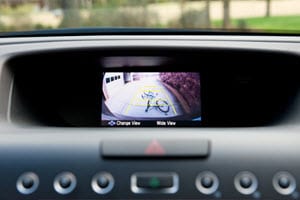
Backup cameras can help you avoid people, cycles, and other cars.
Obviously, it is better to avoid a crash in the first place. Many newer cars have features to alert you if a collision is about to occur. Many of these features come with luxury or expensive cars, but they are becoming much more commonplace. Older cars simply do not have these features. Electronic stability control wasn’t standard until 2012. Some older cars will not have anti-lock brakes, to keep from having them lock up.
Keep in mind, if you are driving a car which has auto-pilot, you are still responsible for paying attention. Self-driving cars are not perfect, and you are responsible if there is a crash. A crash occurred when a driver was not paying close enough attention and the self-driving feature of his car became confused due to the sun and the color of a truck. The driver, who died, was found at fault.
When you are purchasing a car, whether it is for yourself or a loved one, check and see what safety features it includes. Purchase the safest car you can for the money. Also, look into how the car survives crashes. Consumer reports and other organizations provide a lot of crash information. Keep in mind that the standards change over the years. You want to look into crash information not for what it was in 2005, but for how such a car would do under today’s standards. Find out what safety features the car includes. You also want to look into what, if any crash avoidance features the car provides.

Wearing a seatbelt properly can help keep you in your seat during an accident.
Speaking of my father, he wore his seatbelt, but he complained about it. I remember him not wearing his seatbelt back in the 80s and maybe into the 90s. This was very common. My dad’s view was that the government had no right to force him to wear a seatbelt, and he resented the nanny state. I got his point then, and I understand it now. But regardless of your views on the role of the government in our lives, seat belts really do save lives. And yet, about 11.5% of drivers and passengers, or 25 million people, do not wear seat belts. Seat belts became standard equipment in the late 1960s. Mandatory seatbelt laws started showing up in the 1980s. In the past 50 years, seatbelts saved 329,715 lives. Seat belts help prevent ejectments, most of which are deadly or cause serious injuries. They also stop you from slamming head or planting your face into the dash of your car. Front seat passengers have nothing between them and the dash. In an accident in which no airbag deploys, they can easily fly through the windshield car, or hit the dashboard.
I personally knew someone who went flying out the driver’s side window when she rolled her car. She survived, but with a traumatic brain injury that changed her life. In a passenger vehicle you are 50% more likely to die if you are not wearing a seatbelt. In a light truck or SUV your chances of survival without a seatbelt are even worse.
Many people don’t wear seatbelts in the back seats. Those people “are three times more likely to die in a crash” than those who are belted. Frequently, the people in the back seat will become a projectile and hit the front seat driver, killing them. So not only are unbelted backseat passengers more likely to die. They may kill the driver as well.
It is also important to wear your seat belt properly. As a very short person, I find that many seatbelts hit me across the neck. This means I need to adjust the belt so that it falls properly. Many cars allow you to adjust the height of your belt. If this adjustment is not enough to make the belt fall properly, or if your car does not allow you to adjust the belt, consider purchasing an adjuster which will hold the belt properly across your chest. The last thing you want is to have the seat belt strangle you or a child as it contracts to stop you from moving forward.
Your posture can make a big difference in both avoiding an accident and minimizing damage to your body.
While it may be common to drive with only one hand, it is better to keep both hands on the wheel. It is important, while doing so, that you keep “your hands, wrists and forearms in alignment.” If your wrists are limp or bent, your hands can be shoved against the steering wheel in such a way as to cause your wrists to break. In addition, you will be more responsive with your hands properly placed. Having to quickly adjust your posture and get that second hand on the wheel can take away moments when you need every second to respond quickly.
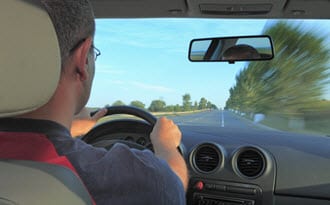
Adjust your headrest to avoid whiplash.
Whether you are a driver or a passenger, the more contact your body has with the seat, the better. Modern cars have seats which are meant to protect you in a crash. Don’t forget about the headrest. Headrests are not common in much older cars, but they are required today. The headrests are meant to protect your neck from whiplash. Whiplash, even in low speed accidents, can cause serious soft tissue damage. The action of your head whipping back and forth can also cause a traumatic brain injury. Remember, your brain literally can move around in your skull a certain amount. If it bangs against your skull as your head whips forward and back, you can suffer brain damage. Adjusted properly, that is about two inches behind your head and no lower than the top of your head, the headrest provides both head and cervical support.
Babies and young children should be in car seats. For an infant, the seat should be rear facing. This means that babies who are under 35-40 pounds and are below 32-35 inches tall. You can look into a convertible seat to avoid having to buy two seats early in your child’s life. These seats convert from rear facing to front facing. There are also 3-in-1 seats. These seats will work for your child until they no longer need a booster seat at all. It is important though, to make certain that the seat functions correctly for your car and your child. Make certain that the seat has a high rating from the National Highway Transportation Safety Administration.
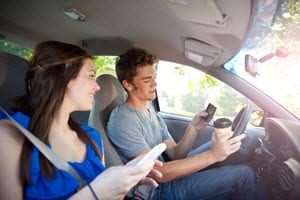
Watch out for distracted drivers.
You have no doubt heard that you should drive defensively instead of aggressively. Defensive driving is a method of driving which allows you to initially avoid, and if not possible, safely respond, to hazards on the road. Defensive driving reduces your risks of getting into an accident by avoiding putting yourself in situations where you are likely to experience problems. Driving defensively means that you are taking a number of steps to protect yourself and other cars on the road. This includes:
Consider taking a defensive driving course so that you know how to drive and respond safely.
As noted, paying attention is part of safe driving. Cell phones cause crashes, because people are paying attention to them rather than to their driving. Distracted driving is not a new phenomena, but it has gotten worse. Prior to cell phones, we were distracted by putting on makeup, shaving, eating, changing radio stations, noisy children, talking to a passenger, you name it. Staying focused on the road is key. Everything else can wait until later. If you are not paying attention, you will respond slowly to events occurring around you. Seconds count when it comes to avoiding a crash. If a crash is unavoidable, responding properly can make the difference between living or dying.
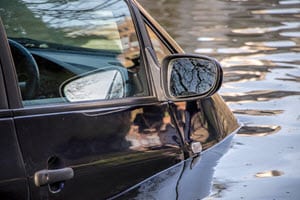
The right tool can help you escape if you get trapped in your car.
How you respond after an accident can also make a difference between living and dying. It is likely that you will not feel pain immediately after a crash. This is due to adrenaline or shock. You will want to move immediately, but it is best to stop and take stock of yourself and in the physical position of your car. Some injuries can be worsened by movement. There may be times when you need to stay still to avoid making a neck injury more severe. If you are in a safe location, it may do you well to stay exactly where you are. Try to calm yourself with some deep breaths. Then you can look around and get a sense of where you are physically located and how your body feels.
If your car is on fire (fortunately a rare experience) you need to get out quickly, but safely. Similarly, if you find yourself on a busy road where you may get hit, it is important to move if at all possible. The same is true if you find yourself in water in a sinking car. Get out as quickly as you can.
That seatbelt which saved your life during the crash can become a trap after. Having a tool that lets you cut seatbelts or break glass can help you get out of your car quickly. Car escape tools that can fit on your keychain or be kept in an easy to reach location can help, If you don’t have an escape tool and you need to break a window, the metal attaching your headrest to your seat can sometimes be used to break the window. Not all headrests are removable and capable of breaking a window, so it is best not to rely on this option. Consider buying a car tool now so you have it just in case.
If you, or anyone else at the scene, is injured, get help as quickly as possible. If you cannot dial your phone (or do not have one) tell someone in the approaching crowd (if there is one) to make the call. Don’t just say “someone call 911” direct a specific person to do so. People at the scene of accidents are upset and sometimes frozen. Being specific will get a faster response. Otherwise people will simply assume that someone else is making the call.
Consider getting training in basic wound care and CPR. That way if you or a loved one suffers an injury, and you are capable of helping, you will be able to treat them, and perhaps save a life.
There are many steps you can take to increase your chances of surviving a serious car accident.
These include:
If you are in a car accident, we at Lowenthal & Abrams are here to help you. We have been representing victims of car crashes since 1975. Feel free to contact us for a free, no obligation consultation
LOWENTHAL AND ABRAMS, P.C.

Contact us for a FREE consultation. No fee unless compensated.